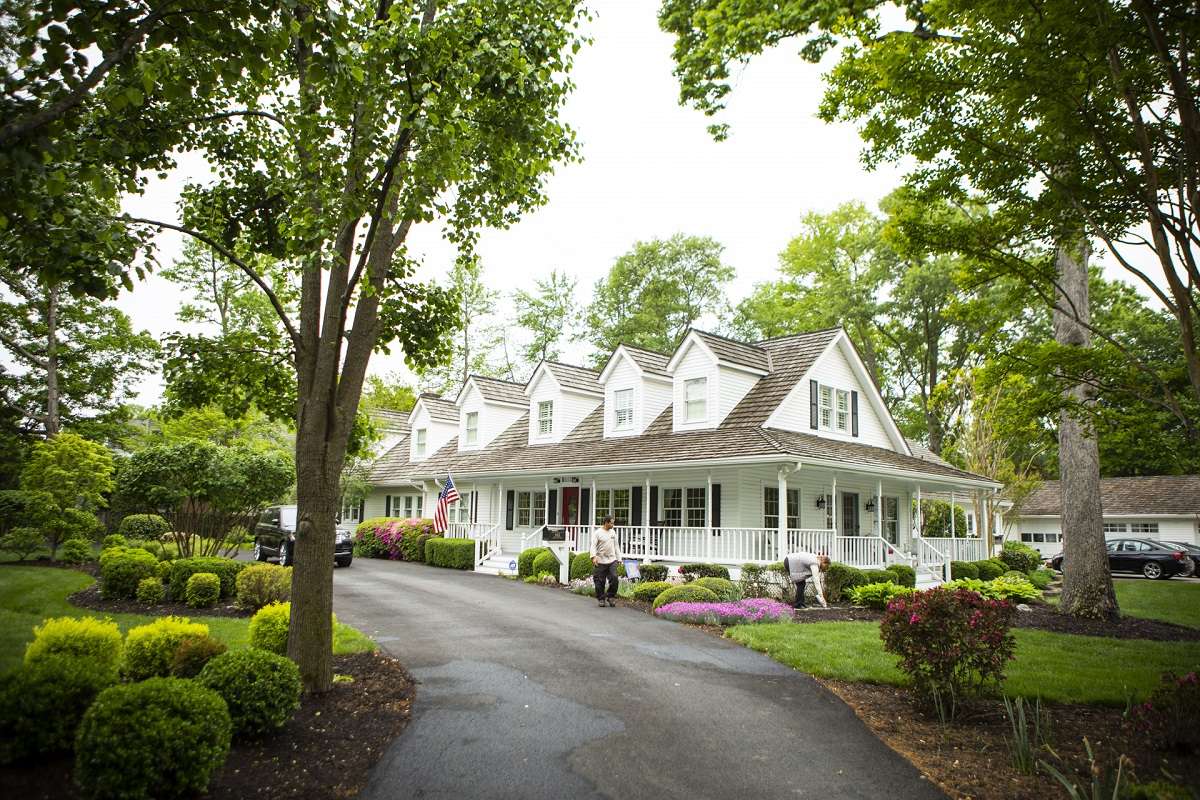

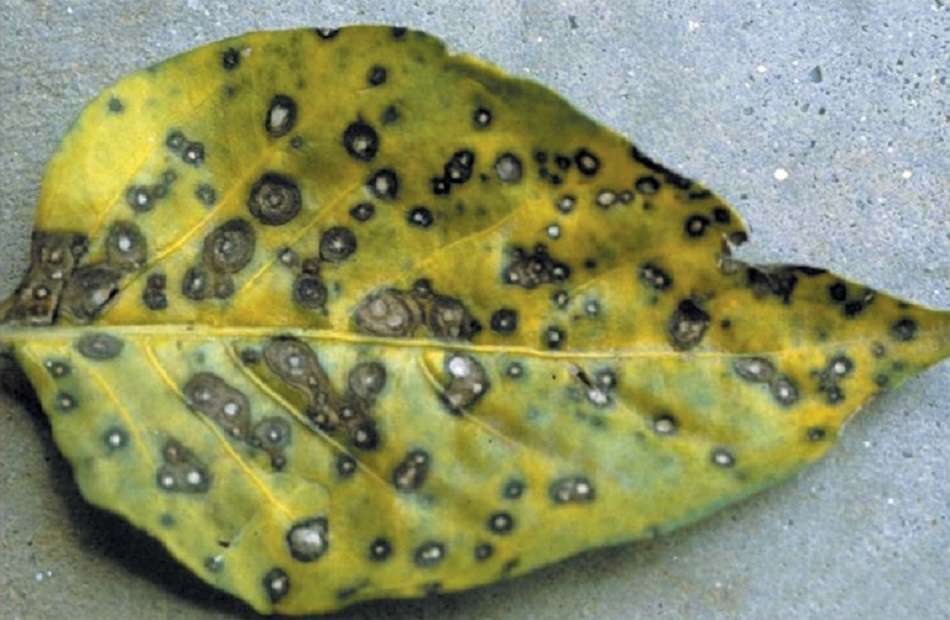
The shrubs on and around your property help make it both unique and beautiful. But just like your lawn, you want to make sure that your plants are well-cared for and continue to look their best. Unfortunately, plant diseases are always potentially lurking, just around the corner, threatening the health of your landscape.
When a shrub succumbs to disease, this not only has aesthetic ramifications (having a negative impact on the overall look of your landscape), but it has a negative monetary value impact as well. Now, you have to pay to replace the shrub, which can get costly.
Because you’d much rather prevent disease in the first place, you may be looking to understand more about it. Shrub disease can be quite complex but we’ll share with you some key information that will help you understand what you may be dealing with.
There are a number of different shrub diseases that we see in Northern Virginia, some obviously more common than others.
Here are some of the diseases that we see most often.
There are many different “leaf spots” in our area, but thankfully few are lethal. Most established trees and shrubs will be able to recover because they have enough leaves that they are able to replenish their foliage without too much detriment.
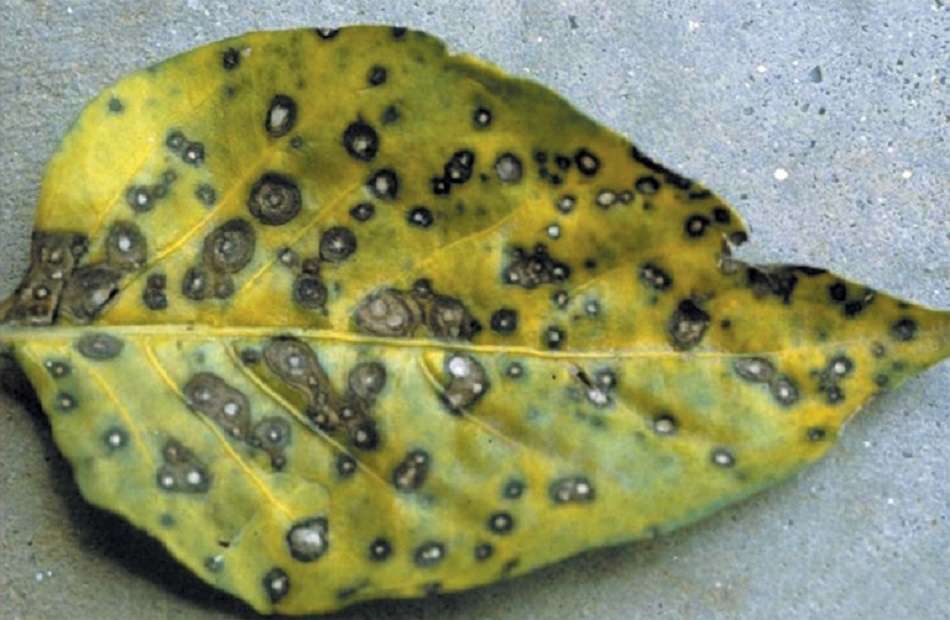
Fungal leaf spot tends to favor cool, wet, and spring weather. Shrubs that are more prone to leaf spot disease are:
In most cases leaf spot is not a threat to the overall health of the shrub, it’s more of an aesthetic problem. The best management practices involve pruning and removal of infected leaves and dead twigs during the winter or dry summer months.
Thinning mature shrubs can also help with better airflow. In terms of shrub disease treatment, for plants where leaf spots are detrimental, a professional fungicide application will also be warranted.
This is a problem that occurs most in the following plants:
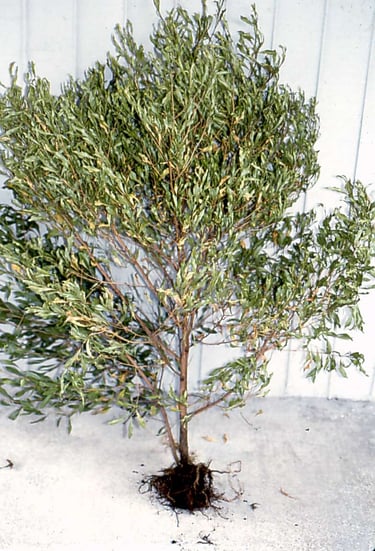
This shrub disease appears mainly on wet landscapes. As roots are killed the leaves begin to turn a lighter green and eventually yellow. The plants decline in vigor and suffer additional damage from other pathogens and pests.
There’s a distinct phase of phytophthora disease where infected plants may show symptoms on leaves and shoots but may have a completely healthy root system. Mature leaves are resistant, however, if they become infected, they will fall prematurely. Affected leaves droop and curl towards the stems.
Chemical controls can be made throughout the summer season to control this disease, however it will not cure the plants that are already showing symptoms. Best prevention is to ensure proper grade and drainage. Newly planted Rhododendrons should be watched closely for symptoms and infected plants should be removed promptly.
Symptoms on older plants can be caused by introducing infected plant material into the same bed, changes in water drainage patterns, and low plant vigor. So basically making sure your landscape is well drained and your plants aren’t in standing water or in compacted soils will go a long way to preventing this disease.
This is a fungal disease that primarily infects Junipers, but can also infect Cryptomeria, Chamaecyparis, and Thuja species. This one seldom causes significant damage in landscapes, but when weather conditions are favorable it can be very devastating.
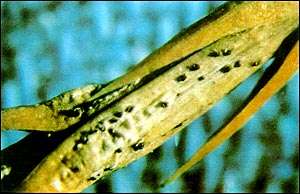
In terms of shrub disease treatment, prune out any affected plant material to prevent spreading the disease. Fungicides are also effective.
If the Juniper does succumb to this disease it is recommended to replace with something that is not typically affected by this disease because it will be setting up any replacements of the same species for failure.
There are two forms of this disease—one is lethal; one is not. This one had a lot of people scared after it showed up here in Virginia. Boxwood blight pathogen is most active at temperatures between 64 and 77 degrees Fahrenheit, but it can survive and grow outside that temperature range.
Rainfall events also favor this disease, but whether or not disease develops depends on the length of time the leaves remain wet. Therefore, when warm temperatures and prolonged rainfall are present, be on the lookout for boxwood blight. 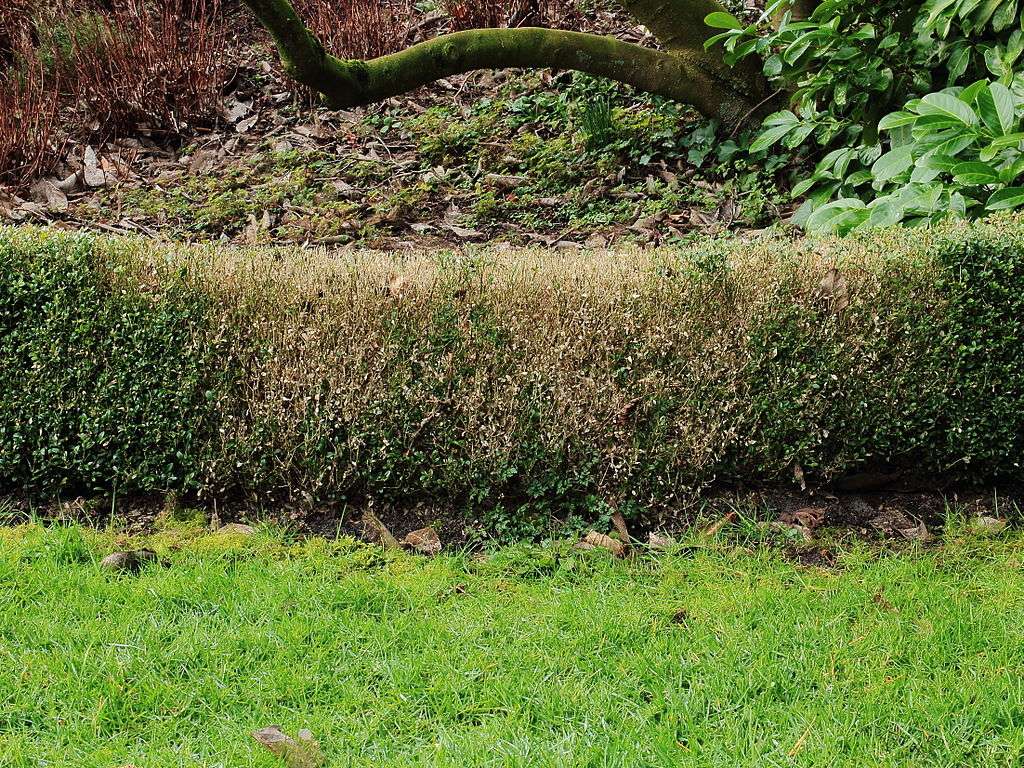
Early on, the blight fungus causes circular, tan leaf spots, often with a darker border. Black stem lesions appear on infected green stems. Often the first symptom noticed, however, is sudden and severe leaf drop.
Plants may lose all of their lower leaves with only a tuft of green remaining at the top. Typically this is introduced into the landscape by infected plant material but it can also be infected by infected leaves blowing in from a nearby infected property. Animals can also pick up the spores on their fur or bodies.
The best course of action is prevention. Whenever you buy or install boxwoods make sure that you are getting them from a trusted source that participates in the Boxwood Blight Cleanliness Program.
Here at Kingstowne, our nursery supplier is part of this program.
When it comes to shrub disease treatment, it’s important not to compost leaves from infected boxwoods. Cover the infected plant material that has fallen with a 2 to 4-inch layer of mulch to prevent splash dispersal of spores to lower leaves.
Fungicides are able to be used and are very effective at preventing the disease, but they are not effective once the disease is present. This disease isn’t very common yet, but it is definitely one that deserves attention because immediate action is required if it enters a landscape.
Shrub disease identification can be difficult. Even if you are looking at shrub disease pictures, without professional training in horticulture, you might miss certain nuances or subtle signs of a problem. But early detection means everything when it comes to preventing these diseases from wreaking havoc on your shrubs. That’s because early detection also means early treatment—and possibly stopping a problem in its tracks.
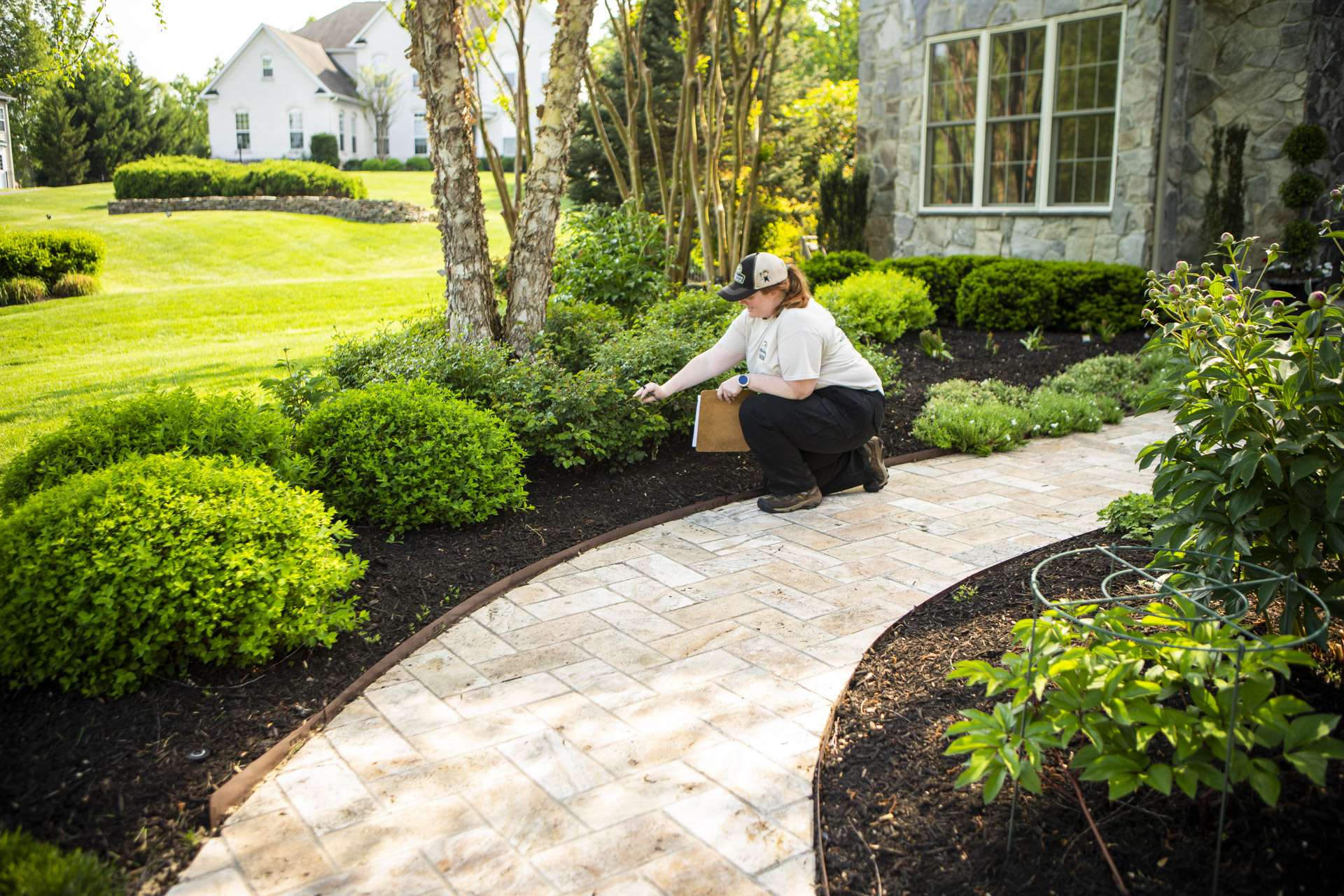
It’s also worth mentioning that disease is just one of several problems that a shrub might be experiencing. It could also be a pest problem or even an environmental stressor. Sometimes the symptoms of these problems even mimic one another. That’s why having a professional inspection is important. A pro can identify what’s really going on with your shrub and then implement the best course of treatment.
In addition to proper identification, prevention is also important. Then you can avoid some of these problems in the first place. Adding a Plant Health Care program can also go a long way in preventing disease—as well as other serious problems—from even having the chance to cause problems.
Simply put, Plant Health Care provides your plants with vital nutrients they need to thrive while also protecting them against insects and disease. The treatments combine fertilization, pest control, and disease control. As part of this program, your plants’ leaves may be greener, your plants’ flowers may grow more profuse with potentially longer bloom time, and your plants may be better protected against the threat of not only disease but also insects.
While disease may try to wreak havoc on your landscape, you can do something about it. By partnering with a landscape professional that you trust, you can feel confident that your shrubs will be protected as best as possible.
Of course, sometimes disease overcomes even the best attempts at protection and when that’s the case, you want to know that your landscape pro will know how to best handle what’s next—even if that means explaining why plant removal might be your best option.
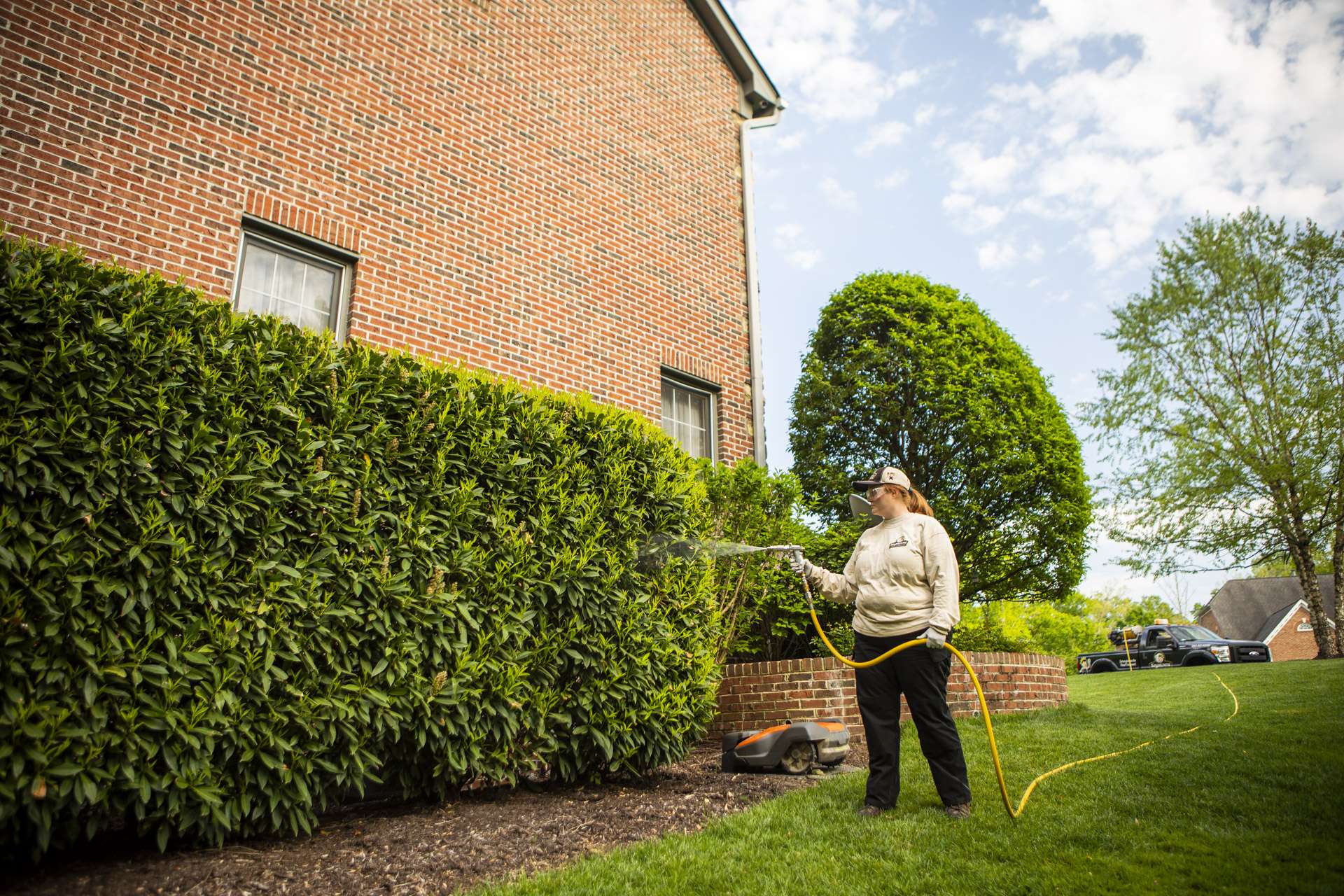
At Kingstowne, you can count on us to always steer you in the right direction and give you your viable options. With trained horticulture experts on staff, we know exactly what your plants need to perform their best. We are also well-versed in all the nuances and details of disease, so that if a problem does arise, we can take swift action. This should give you peace of mind that your landscape is in the best possible hands.
If you’d like to discuss plant health care for your landscape shrubs and trees under 20 ft. in height, request a quote, get your customized plan, and relax knowing that you’re getting the royal treatment.
Image sources: leaf spot, root rot, juniper blight, boxwood blight,

Since 1997, Krisjan has led the Kingstowne team with one simple philosophy, treat every customer like the “only” customer. His passionate pursuit of impeccable customer service has resulted in 24 successful years and a thriving company with over 85 employees, helping thousands of homeowners in the Alexandria, Arlington, and Springfield, VA area get what they want - a worry-free property they can be proud of.


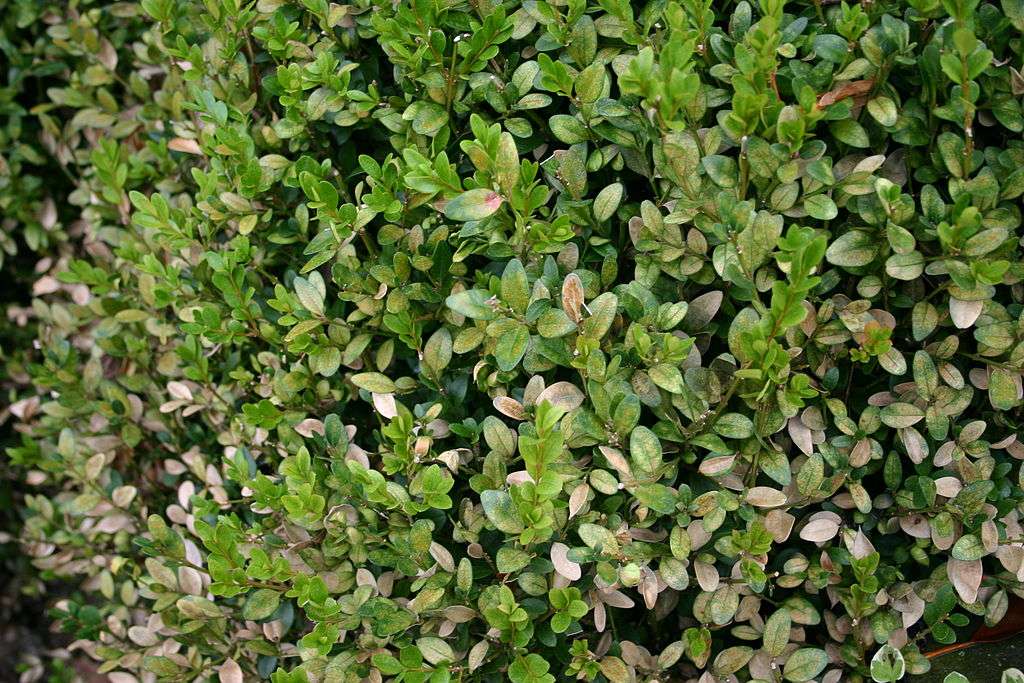

If You're Looking For a Sign, This is It.
Seriously, that lawn isn't getting any better on it's own. Mrs. Jones just called the HOA on you